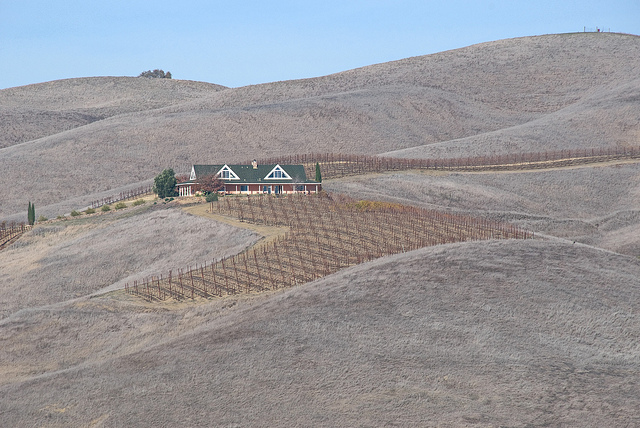As a province that imports half of its food, B.C. has a stake in California’s drought. Within California, the media discourse has been: Who is using “our” water? Within B.C., it takes the form of: Will B.C. continue to have access to imported food or will it be “theirs”? These responses to water scarcity exemplify the need for collective action that catalyzes communities and demands justice.
Of the many responses to California’s drought, two reactions are powerfully audible: a strict adherence to business-as-usual and, in opposition, unified resistance to unsustainable practices. It is yet to be seen which response will gain the most traction.
In full disclosure, I am an interested party. As recent transplant from California to B.C., I have lived in times of drought. My family continues to do so and regularly relays the impact the drought has on their lives. As per Governor Jerry Brown’s executive order to reduce water usage by 25 per cent, they replaced their backyard foliage to drought resistant plants, removed their backyard lawn, and installed a whole house fan to reduce their water and energy consumption.
Yet, utter silence surrounds the many ways industry diverts water resources to other parts of North America. While the executive order calls for restrictions to commercial, industrial and institutional water use, it does not name extractive or food industries; instead it cites campuses, golf courses, and cemeteries. The state government circumvents holding the most water intensive corporations responsible.
Companies like Dasani, Aquafina, Arrowhead, and Crystal Geyser (subsidiaries of larger companies, like Pepsi and Coca Cola), continue to bottle potable water from California sources. Water-intensive fracking practices go on uninterrupted. Extractive companies have even gone so far as to sell their contaminated water waste to agricultural farmers. Further, industrial agriculture and manufacturers carry on with production, using a disproportionate amount of water in the process; the almond industry alone uses 10 per cent of California’s water supply.
Individuals are being encouraged, even mandated, to change their water consumption practices. With one recent estimate of only a year left of water, there is a real sense of justifiable urgency. However, rather than hold the biggest consumers of water liable, the stated policies place the greatest burden on individuals, many of who do not have the same resources as my middle-class family.
Events like the March for Real Climate Change Leadership, which mobilized approximately 8,000 concerned citizens in Oakland this February, call for an end to corporate colonization through fracking and an ethics of people over profits. As daily lives are impacted, the public turns the spotlight back on industry practices to call for accountability and systems change.
Serious health consequences, such as poor nutrition, cancer, heat stroke and dehydration, need to be accounted for in our transition to a sustainable economy; otherwise, they will become all the more serious over time. California’s drought provides insight into areas for improvement, including ensuring public water rights, protecting migrant agricultural workers, and increasing support for nonprofits and welfare agencies serving individuals who are economically disadvantaged and disproportionately impacted by climate change.
As California’s drought continues, B.C. could see a multitude of local impacts, such as increasing food prices and limited supply, affecting food accessibility and population nutrition, and food contamination due to agricultural use of fracked water. In other words, we have a collective stake in the outcomes of climate activism (or inaction) in California. The health and social justice implications of climate change, even spatially removed, need to be addressed for effective climate adaptation and mitigation.
In B.C., the proposed solution is to localize food production. While supporting local production is an important piece of the puzzle, we also need to consider our transnational context to move toward systems change. Communities must build capacity in the face of climate change while cultivating mutuality with our neighbors. The California drought is not “their” problem; it’s our problem. Rather than turn away, it is imperative we see the wellness of others as inextricably linked to our own. We can use lessons from the California drought as a guide for our better future.
Responding to California’s drought is not exclusively about adapting to climate change, but also supporting fellow climate and food system activists. It goes beyond individual change to see the bigger picture — the unchecked production and lax policies that got us into this situation in the first place. It looks at how we are interconnected by more than the goods that pass between national borders. As Rebecca Solnit argues, there is no “magical” political leader who will make change happen. Groundswell, or the powerful mobilization of concerned communities, is the leadership we need for equitable, transformative change. So where should our limited energy be spent? At the systems level, supported by communities connected across space, for the same cause: climate justice.
Erin Daly is currently a graduate student at Simon Fraser University, pursuing her master’s in public health with an emphasis on social inequities and health. Her interests encompass climate/environmental/social justice, women’s health, and social mobilization.
Photo: John Weiss/flickr



